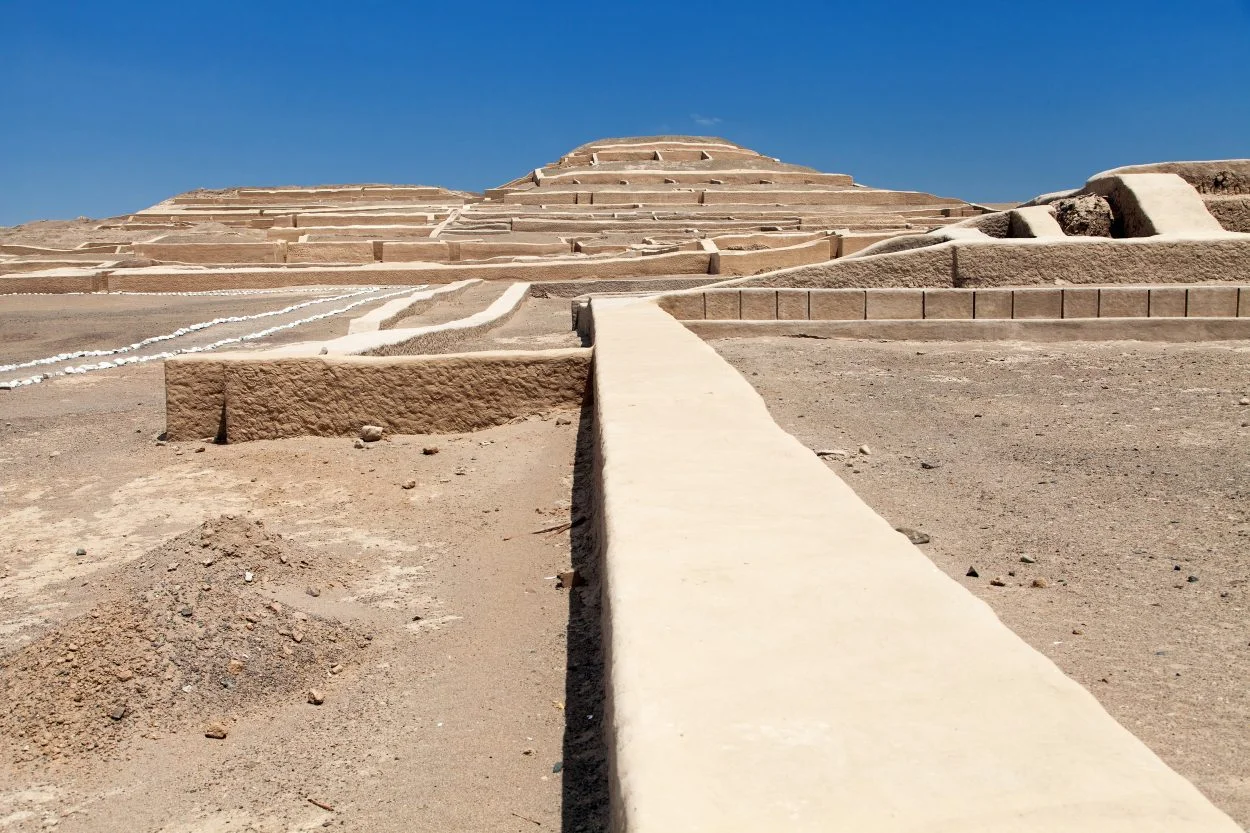Cahuachi is a large ceremonial complex built by the Nazca, located in the basin of the Rio Grande in the Central Andes of Peru.
The Nazca emerged as a distinct archaeological culture around 100 BC from the preceding Paracas culture, having settled in the valley of the Rio Grande de Nazca drainage, and the Ica Valley. The culture is characterised by its pre-fire slip polychrome pottery, that demonstrates a shift from the Paracas post-fire resin method.
The Nazca are most widely known today for the Nazca lines, a series of giant linear features and geoglyphs, and the construction of large underground aqueducts called “puquios” to provide water in the arid environment.
Evidence of occupation at Cahuachi dates as far back as 400 BC, but during the Early Intermediate Period the site became an important Nazca centre in the Nazca 2 Phase (100 BC to AD 1).
By the Nazca 3 Phase (AD 1 to 450), Cahuachi’s status was elevated to serve as the main ceremonial complex of the region. During this period, a series of major construction projects was initiated that terraced parts of the existing topographical features to give the appearance of monumental architecture.

Over 40 terraced mounds have been identified, some topped with adobe structures such as temples, room constructions, cylindrical shafts, and walls. The largest mound is called the “Great Temple” that exceeds 150 x 100 metres at the base and reaches a height of 100 metres. At the top of the mound is a large square, behind which rises a pyramidal structure. The lower section of the mound has four platforms terraced on different levels, whilst on the lower platform is several quadrangular enclosures.
Unlike other contemporary Nazca sites, Cahuachi lacks the domestic material evidence and residential structures to suggest it was a population centre. Instead, the site appears to be occupied periodically for religious activities and as a site for sacred pilgrimages.
The function of Cahuachi changed during the apogee in the Nazca 4 Phase, where it was used largely for burials. The architecture during this time was mostly abandoned, but did have “postapogee” offerings through the Nasza 6 and 7 Phases, until Cahuachi was completely abandoned around AD 450-500.
Header Image Credit : Daniel Prudek – Shutterstock





